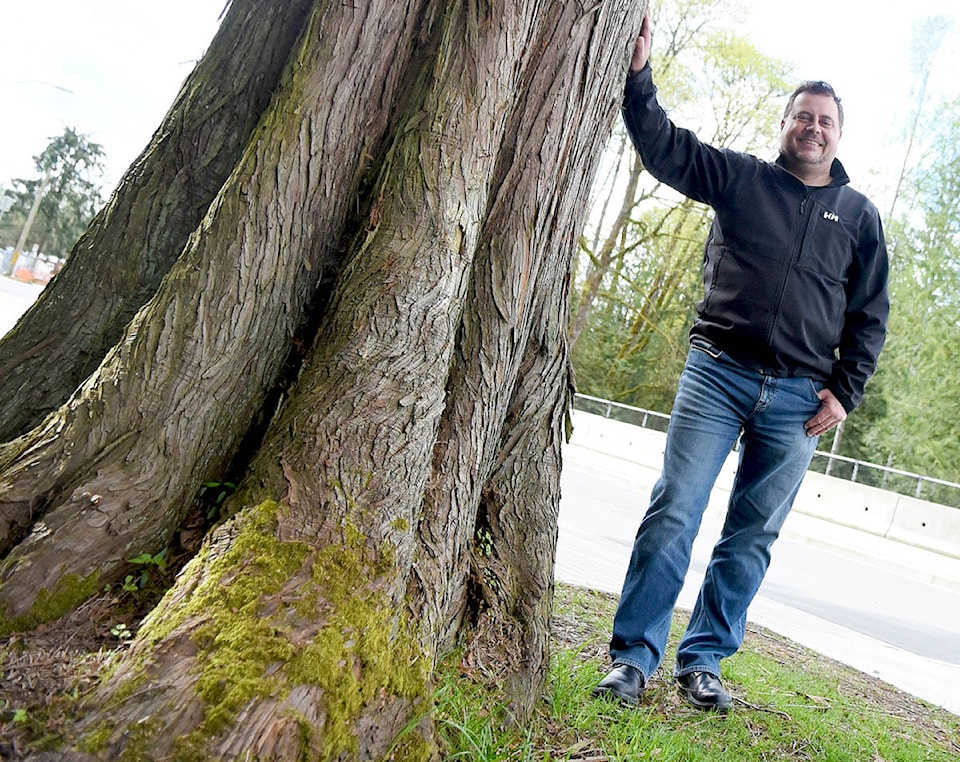When Nat Cicuto hears people in Brookswood say “We don’t want another Willoughby,” he feels a little bit offended.
As president of the Yorkson Watershed Enhancement Society, he has seen firsthand how new developments can bring opportunities for environmental improvements.
In Yorkson, their watershed society has consulted with development companies to help improve the condition of Yorkson Creek and bring back dwindling salmon counts.
In the early 1800s, prior to the Fort being constructed in Fort Langley, there were anywhere from 1,500 to 2,000 salmon spawning in Yorkson Creek, Cicuto said.
By the early 2000s, there were just 18.
But thanks to a culvert repair in 2004, and other upgrades, that number climbed back up to 170 in 2016, with 50 salmon travelling as far south as 84 Avenue.
And with the return of salmon, a variety of other species have come back to the area as well, including large raptors.
“We saved it just in the nick of time,” Cicuto said.
“It could have been wiped out, it was so close.”
Cicuto, who works full-time in the development industry, believes communities need to “be vigilant” in working with stakeholders to ensure environmental improvements are made as new houses are built.
“We’re in the midst of development (inWilloughby), mitigating it is the best we can do,” he said.
“We can’t stop the wheel of change, but we can kick a few spokes out.”
One project he is particularly proud of is a new bridge on 84 Avenue, just east of Yorkson Creek Middle School. Through consultation with McElhanney Consulting Services, an upgraded salmon-friendly design was created, which earned the engineering company accolades at the 2017 ACEC-BC Awards for Engineering Excellence.
McElhanney designed a boxed culvert with a fish baffle system, which created new spawning habitat that adult Coho salmon used just weeks after it was completed. The design also saved the Township of Langley about $5 million, according to McElhanney’s website.
Their design has since been mimicked at 86 Avenue, and there are discussions of it being used when Highway 1 is widened as well, Cicuto added.
He believes that as development continues and culverts are replaced, they will soon have salmon travelling all the way to Willoughby Town Centre at 76 Avenue, where there are currently none.
URBAN FORESTS
Despite the work that has been done to improve Yorkson Creek, there is one area of environmental protection that Cicuto wants to see improvement on.
He believes the retention of mature trees is lacking in Willoughby, and hopes that developers will take this into account when building new homes in Brookswood.
There are a couple different ways to incorporate them into a design, and it doesn’t necessarily have to cost the developers extra money, he said. The first is through retaining clusters of pre-existing significant trees, and the second is by transplanting larger trees that are around 15 to 30 years old.
Cicuto says there are a few spots in Willoughby where significant trees have been taken into account. At the new bridge on 84 Avenue, for example, the width of the sidewalk was reduced to avoid removing a large cedar tree, he said. And at the Pepperwood townhouses on the corner of 208 Street and 80 Avenue, a grove of large cedars was retained at the front entrance.
Ideally, he’d like to see a tree inventory completed, so that areas with strong, mature trees can be kept aside as parks. Creating a network of these areas would also help wildlife safely move through the community.
According to Tree Canada, a non-profit organization, urban forests provide many environmental, economic and social benefits, including: sequestering of gaseous air pollutants and particulates; energy conservation through transpirational cooling, shade and wind reduction; storm water attenuation; noise buffering; provision of wildlife habitat; increased property value; improved aesthetics; and psychological well being.
